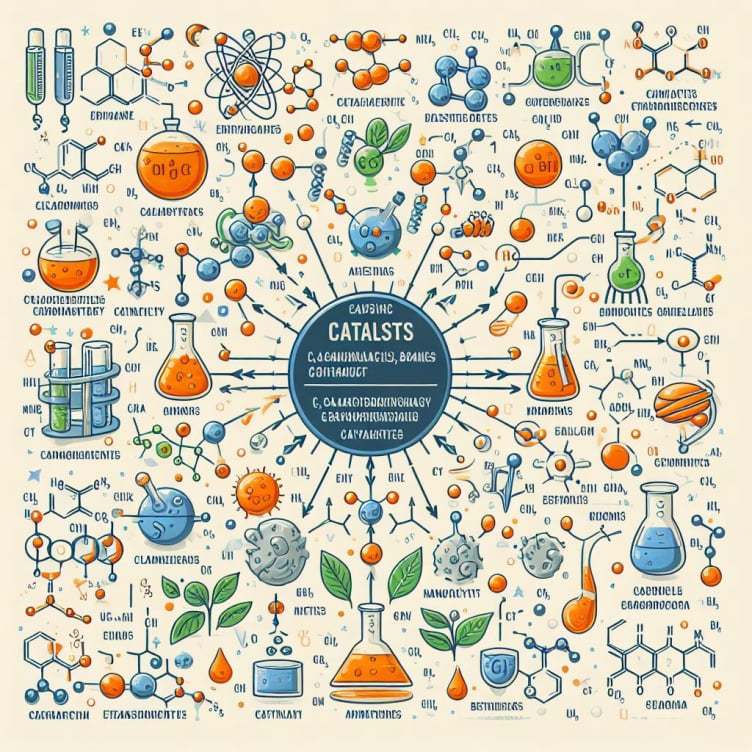Some of the main types of catalysts include:
Homogeneous Catalysts
These catalysts are in the same state phase as the reaction's reagents.
They are usually metal ions or metal complexes directly involved in the chemical reaction.
Examples include transition metal ions such as Fe²⁺, Pt²⁺, among others.
Heterogeneous Catalysts
They are in a different phase from the reagents, often being solids.
They are commonly used in surface reactions, where reagents interact with the surface of the solid catalyst.
Metals supported on carriers such as alumina oxide, zeolites, and platinum on carbon are common examples.
Acidic and Basic Catalysts
Acid catalysts accelerate reactions involving protons (H⁺ ions).
Basic catalysts accelerate reactions involving hydroxide ions (OH⁻).
Both play an important role in transesterification, esterification, and hydrolysis reactions.
Enzymatic Catalysts
They are proteins that act as biological catalysts in specific reactions.
They are highly selective and efficient, operating under mild temperature and pressure conditions.
Enzymes such as catalase and amylase are examples of enzymatic catalysts.
Phase Transfer Catalysts
These are catalysts that facilitate the transfer of reagents between different phases, such as liquid and gas.
They can be used in reactions involving substances insoluble in water, for example.
Photochemical Catalysts
Activated by light, these catalysts are used in photochemical reactions.
Titanium dioxide (TiO₂) is a common example, used in processes such as photocatalysis.
Redox Catalysts
They participate in oxidation and reduction reactions.
Examples include metals such as cobalt and iron in hydrogenation and oxidation reactions.
Choosing the right catalyst for a given reaction is crucial to optimize the process, increase efficiency, and reduce costs. The continuous development of new catalysts is an active area of research, seeking more sustainable and efficient solutions for a wide variety of industrial applications.

